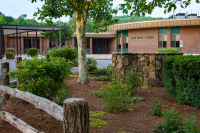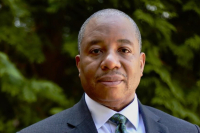Bear zoo charged with violation of Animal Welfare Act
 Federal inspectors have upped the ante for a controversial bear zoo on the Cherokee Reservation, this time opening an official complaint against the operation that could face large fines or even be shut down.
Federal inspectors have upped the ante for a controversial bear zoo on the Cherokee Reservation, this time opening an official complaint against the operation that could face large fines or even be shut down.
Cherokee plans massive family adventure park
The Eastern Band of Cherokee Indians is planning a $92-million adventure park, which is expected to attract families to Cherokee and open up a new source of revenue for the tribe.
Tribal council last week approved the idea in a 9-to-2 vote.
Tribal council delves into ABC salary dispute
Some Cherokee leaders are questioning if compensation for members of its various commissions should face the chopping block next fiscal year — in particular the $25,000 made by each of the five members the tribal Alcohol and Beverage Control Commission.
The discussion was prompted by criticism of the tribal ABC Commission by an enrolled member, who called for the ousting of the current ABC members.
Open Air Indian Art Market celebrates 10 years
 Bringing together Cherokee artisans and tourists from every corner of the globe, the Qualla Arts and Crafts Mutual celebrated a decade last Saturday of presenting their Labor Day weekend Open Air Indian Art Market.
Bringing together Cherokee artisans and tourists from every corner of the globe, the Qualla Arts and Crafts Mutual celebrated a decade last Saturday of presenting their Labor Day weekend Open Air Indian Art Market.
Satellite land dispute throws wrench in plans for smaller casino
A Cherokee judge ruled last week in a case that could affect a long-range plan of the Eastern Band of Cherokee Indians to build a low-level casino on a satellite tract of the reservation outside Andrews.
The case also has implications for how the tribe handles property willed by tribal members to heirs who are not Cherokee.
Blowgun, knives and traditional items stolen from Cherokee historical village
 The Oconaluftee Indian Village in Cherokee was broken into recently. Sacred and traditional items used by re-enactors who portray early Native American life at the living history site were stolen.
The Oconaluftee Indian Village in Cherokee was broken into recently. Sacred and traditional items used by re-enactors who portray early Native American life at the living history site were stolen.
Cherokee ABC board claims their generous salary is warranted
The high salaries collected by the five members of the Alcoholic Beverage and Control Commission for the Eastern Band of Cherokee Indians have drawn criticism from some enrolled members. The ABC commission in Cherokee makes more than 10 times what members of ABC boards in neighboring communities make.
Gov. Perdue and Chief Hicks bask in mutual success of live gaming deal at Harrah’s
 North Carolina Gov. Beverly Perdue and other dignitaries gathered at Harrah’s Cherokee Casino and Hotel Tuesday to officially mark the introduction of live table games at the casino.
North Carolina Gov. Beverly Perdue and other dignitaries gathered at Harrah’s Cherokee Casino and Hotel Tuesday to officially mark the introduction of live table games at the casino.
Jackson revisits development rules along U.S. 441
Jackson County leaders appear to be backing down from a lofty vision to transform U.S. 441 leading to Cherokee into a pedestrian-friendly boulevard.
The planning board has spent several months rewriting commercial development guidelines for the 3.5-mile stretch of highway. The result is billed as a compromise that will give prospective developers more flexibility, yet still require basic aesthetic standards.
Jackson to assess potential for ABC profits
Jackson County commissioners in the coming months will weigh whether to open a liquor store in Cashiers, outside Cherokee — or both — but the road to a decision will take a lot of number crunching.
Namely, Jackson County must decide whether it’s likely to sell enough booze to cover the overhead of an ABC store.









